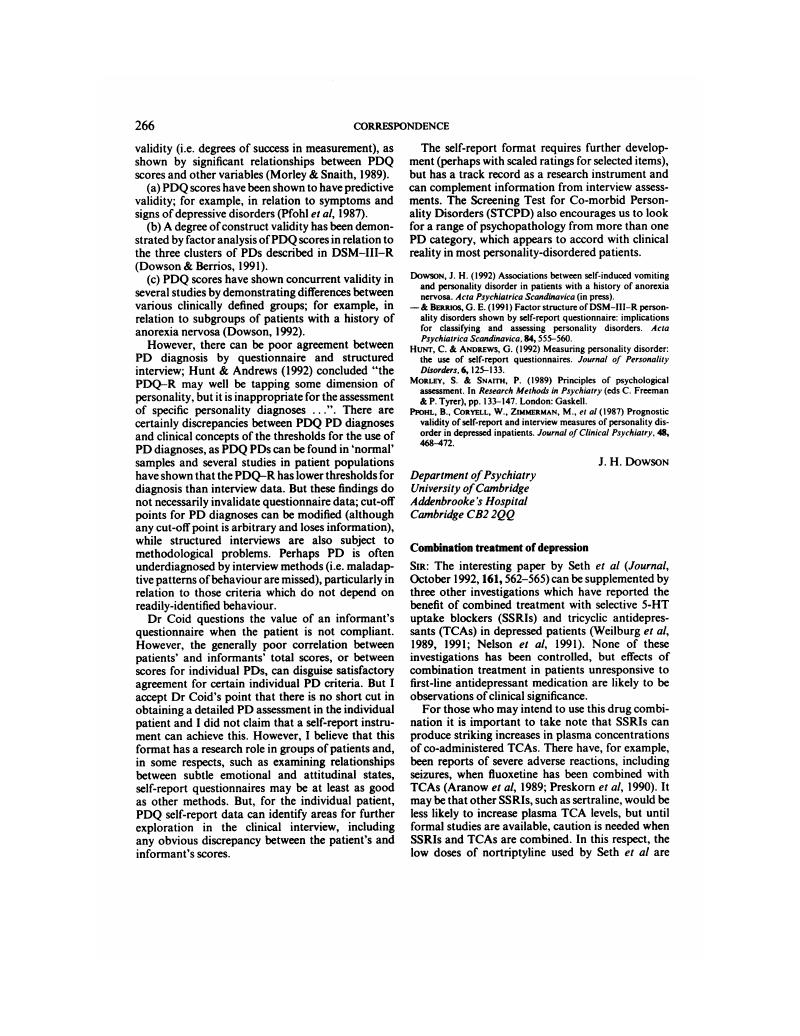Crossref Citations
This article has been cited by the following publications. This list is generated based on data provided by Crossref.
Taylor, David
1995.
Selective Serotonin Reuptake Inhibitors and Tricyclic Antidepressants in Combination.
British Journal of Psychiatry,
Vol. 167,
Issue. 5,
p.
575.
Ozminkowski, Ronald J.
Hylan, Timothy R.
Melfi, Catherine A.
Meneades, Laurie M.
Crown, William H.
Croghan, Thomas W.
and
Robinson, Rebecca L.
1998.
Economic consequences of selective serotonin reuptake inhibitor use with drugs also metabolized by the cytochrome P-450 system.
Clinical Therapeutics,
Vol. 20,
Issue. 4,
p.
780.
McManus, Peter
Mant, Andrea
Mitchell, Philip
Birkett, Don
and
Dudley, John
2001.
Co‐prescribing of SSRIs and TCAs in Australia: how often does it occur and who is doing it?.
British Journal of Clinical Pharmacology,
Vol. 51,
Issue. 1,
p.
93.






eLetters
No eLetters have been published for this article.